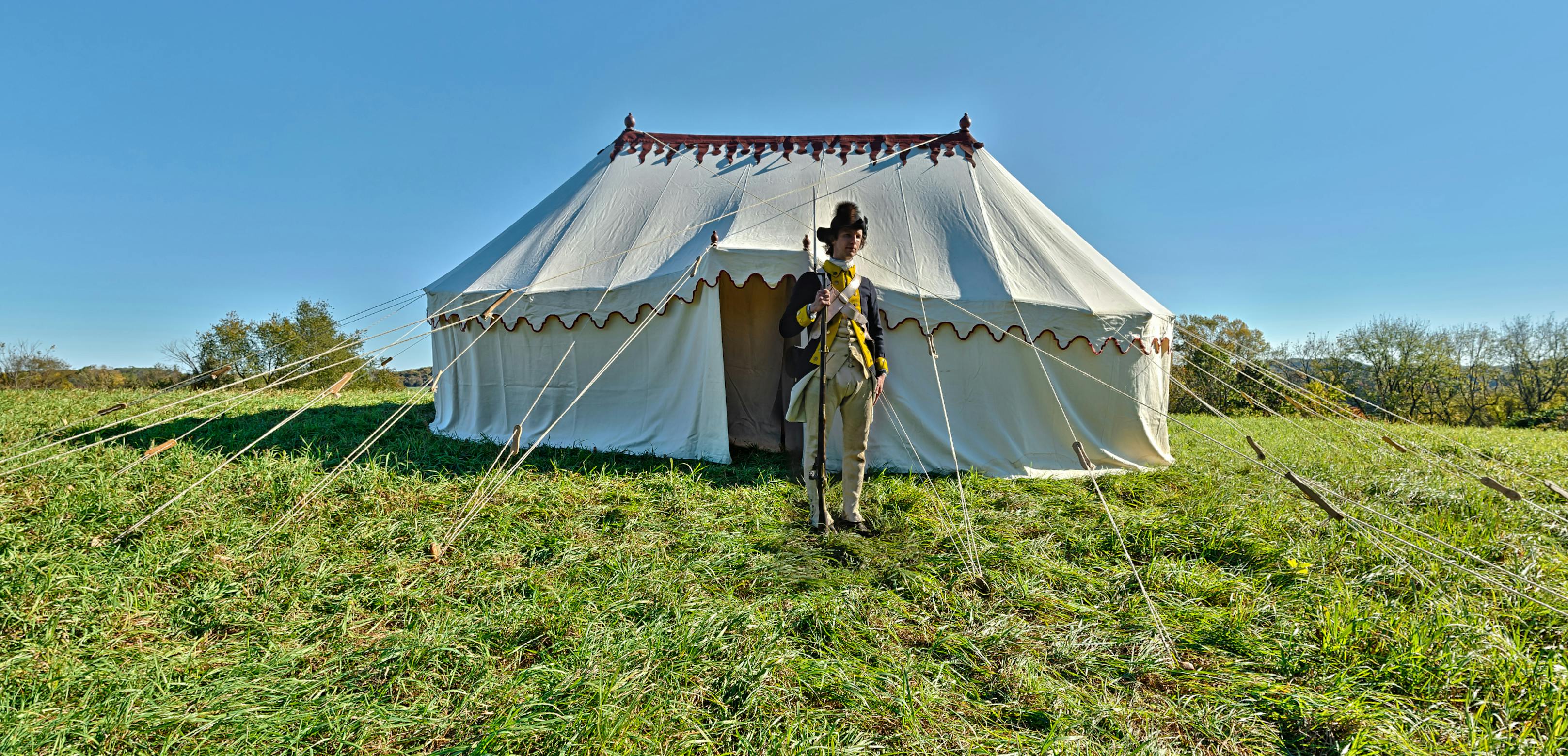Washington's Sleeping Marquee: Parts of the Tent
Click on the numbers here to learn more about the components of the tent and to see images of the original objects and paintings that helped us build this replica.

At the top of the tent, iron pins on the tips of the mahogany tent poles pass through sewn grommets, securing the roof in place with the poles. To protect the pins from rusting and add a bit of style, turned wood balls called finials slide over the pins.
View the FinialThis separate piece of painted canvas is decoratively cut in a design with lightning bolts and balls. It makes the very top of the tent waterproof. But painted canvas is more likely to deteriorate, which is why most of the tent is not painted and also why the original tent valance does not survive.
View the ValanceThe tent is made from a fabric called linen, created by processing the flax plant into threads. Its large roof covers interior rooms used for baggage, a small office, and a bedroom. The canvas folds up into compact sections for transport.
View the RoofThese are the largest ropes on the tent, and they attach to the finials and cross over the tent’s roof. They provide the main structural support and anchors that keep the tent upright and braced against winds.
View the Weather LineThe walls of the tent hang off the roof and are in three sections. That allows for two doors, one on the long end facing us and another on the short side, allowing someone like a servant to enter the baggage chamber at that end.
View the WallThe door of the tent is like a curtain: two of the walls overlap each other. It could be closed with hooks and eyes or held open for easy entry.
View the DoorThis long, narrow flap is called a valance. It helps shed rainwater off the roof and away from the walls, just like the overhand of a roof over a house. The red wool “binding” and cut “scalloped” design are for decoration.
View the Valance (Roof)Smaller ropes called guy lines pass through grommets at the edge of the roof and pull it outwards. They radiate out like the spokes of a wheel and spread the roof out. Each one is staked down with a pin.
View the Guy LineA wooden piece shaped like a flat hourglass with a hole at each end is on each weather line and guy line. These tensioners allow you to adjust how loose or tight each rope support is, ensuring that the tent remains stable and the roof is spread out.
View the TensionerWooden stakes called pins hold the ropes into the ground. They are made from cut and sawn pieces of wood, each pointed and with a small notch to hold the rope.
View the Pin (Stake)Washington's tent is made up of many ropes and separate pieces of canvas. Small sewn holes called grommets allow ropes and rods to pass through the fabric. Twisted wire hooks connect to wire eyes, allowing the walls to hang from the roof like curtains.
View the Grommets, Hooks, & Eyes